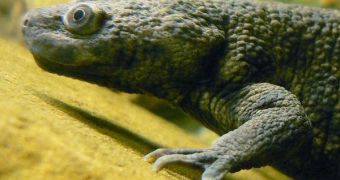Amphibians are not renowned for their ability to defend themselves, other than the shedding of tail bit. Some of them are quite poor at it, in fact, and naturally end up being eaten by predators. But one species had the courage of saying “enough” and the best way it could figure of protecting itself was to learn to project its ribs through its skin at incoming foes. Naturally, this required a bit of tweaking to its spine and ribs, but eventually it managed to perfect this defense mechanism, over millions of years of evolution.
While other amphibian species have developed the ability to run fast, use disguise, or shed body parts when attacked, the Spanish ribbed newt decided to take on a more drastic approach. When confronted with perils, the amphibian projects its ribs outwards at high speeds, piercing through its skin and opposing a row of poisonous barbs to its predator. According to experts who have studied the animal, the newt has to puncture its own skin every time it is attacked, the BBC News reports.
However, since this peculiar defense mechanism was first observed in the newt species, back in 1879, no ill effects have been observed to come to the amphibian due to its behavior. Still, researchers have little clues as to how exactly it manages to do something that would otherwise probably kill other vertebrates. By using modern photographic and X-ray imaging methods, scientists and naturalists were finally able to decipher the complex mechanisms behind this amazing ability.
Whenever the Spanish ribbed newt feels threatened, it pushes its ribs forward, until they make a 50-degree angle or higher with the spine. At the same time, it keeps the rest of its body still. The extended ribs push the skin upwards, and apply so much strain on it, that they eventually puncture it and exit the body. “When teased or attacked by a predator, [it] secretes a poisonous milky substance onto the body surface. The combination of the poisonous secretion and the ribs as 'stinging' tools is highly effective,” University of Vienna zoologist Egon Heiss explains.
Details of the study appear in the latest issue of the Journal of Zoology.

 14 DAY TRIAL //
14 DAY TRIAL //